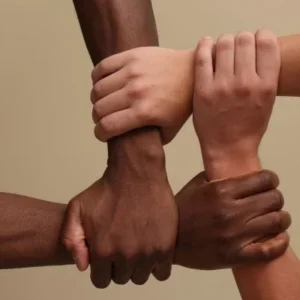In Cameroon, significant international aid cuts—led by the United States and followed by other key donors—have severely disrupted humanitarian efforts, coinciding with political tensions around the country’s October 12 elections. President Paul Biya, now 92, is seeking to extend his decades-long rule, while the country struggles with multiple, entrenched humanitarian crises. The withdrawal of aid has already reduced the number of people targeted for assistance by 800,000 and led to the closure of critical coordination systems, such as the UN-led cluster mechanism.
The Northwest and Southwest regions, affected by a violent separatist conflict since 2017, have been particularly hard-hit. Aid workers report that vital programmes—such as food aid, protection services, psychosocial support, and the distribution of hygiene kits—have been abruptly halted, with some communities not receiving any aid since the conflict began. Local aid groups are attempting to fill the gap but face severe limitations due to funding restrictions, inexperience, and government interference. These constraints are compounded by the lack of international attention to Cameroon’s crisis, which the Norwegian Refugee Council has called “the world’s most neglected displacement crisis.”
The cuts have had direct consequences for vulnerable populations. Survivors of gender-based violence have been left without medical care or support, and the risk of sexual violence has increased due to the absence of protective services. Many aid workers were suddenly laid off, leaving programmes to collapse without proper transition plans. As organisations like the Danish Refugee Council drastically reduce their staff and presence, beneficiaries have been left in confusion and despair, often believing the aid was diverted or stolen rather than withdrawn due to funding gaps.
There is growing concern that these disruptions will escalate conflict and insecurity. Without humanitarian support, economic desperation is rising, potentially pushing more people—especially youth—into armed groups or criminal activity. Peacebuilding and education programmes have been affected, and aid workers warn of a surge in child soldier recruitment and community tensions. Additionally, former humanitarian workers now fear retaliation from the government due to their previous negotiations with separatist groups—common practice in humanitarian access—since they no longer enjoy institutional protection from international organisations.
Amid these challenges, Cameroon’s aid system is undergoing a dramatic shift. The UN’s Office for the Coordination of Humanitarian Affairs (OCHA) has placed the country into an “accelerated transition,” signalling a deprioritisation of its emergency status. The existing cluster system is being phased out and replaced by a new Area-Based Coordination model aimed at fostering local leadership. Some local organisations view this as an opportunity for autonomy and growth, noting that many have built up capacity since the conflict began. However, concerns remain about local NGOs’ ability to uphold neutrality, manage accountability, and resist political interference.
The effectiveness and sustainability of this transition are under question, especially given ongoing disputes between Cameroonian civil society and the government over restrictive policies that hinder NGO operations and access to funding. These issues, combined with shrinking budgets and weak oversight, could see aid manipulated for political gain or withheld from areas deemed hostile to the government.
As Cameroon faces deepening insecurity, rising humanitarian need, and the withdrawal of major international support, many local aid workers warn that the crisis is reaching a critical tipping point. Some hope for a more locally driven and sustainable response model, but others fear that the international system’s sudden pullback has created a dangerous vacuum. Without urgent intervention or new funding, they say the country risks spiralling into broader conflict and humanitarian disaster.






